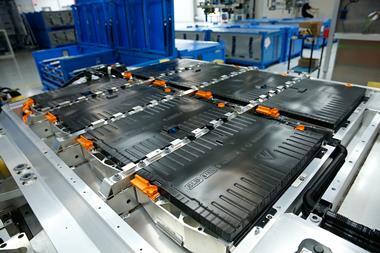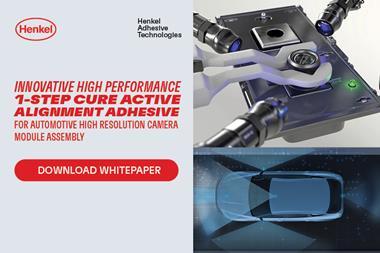Whitepaper: Thermal Potting for EV Components
By Henkel AG & Co. KGaA, sponsor partner
2023-11-22T11:20:00
Learn how superior thermal potting materials enhance heat management, durability, and innovation in electric vehicle components with this exclusive whitepaper from Henkel
Discover the essential role of thermal potting in maximising electric vehicle performance and longevity in Henkel’s latest whitepaper. Delve into the intricate world of electric vehicle optimisation and uncover the crucial role thermal potting materials play in enhancing performance, range, cost efficiency, durability, and reliability in the rapidly growing electric vehicle market. Gain the insights you need to enhance heat management, durability, and innovation in your electric vehicle components by reading this exclusive whitepaper today.
Download to discover:
- The critical role of thermal potting: Uncover the vital role thermal potting materials play in effective heat management, a key factor in achieving optimal electric vehicle performance.
- The varied requirements of thermal potting materials: Learn about the unique requirements of thermal potting materials, spanning design considerations, material handling, assembly, and end-of-life scenarios.
- Henkel’s expertise and innovation: Discover how Henkel stands ready to guide you through the complex thermal potting planning, design, testing, and production process.
- Henkel’s formulations for superior performance: Explore how Henkel is actively developing thermal potting formulations that offer superior heat transfer, excellent component protection, and long-term stability.
FAQs
What is thermal management in electric vehicles?
Thermal management in electric vehicles involves regulating and controlling the temperature of key components, such as the battery, motor, and power electronics, through methods like liquid or air cooling, ensuring optimal performance, efficiency, and longevity.
What are the main heat dissipation methods for electric vehicles at present?
Currently, the main heat dissipation methods for electric vehicles include liquid cooling systems, air cooling systems, and a combination of both, where liquid cooling is often employed for critical components like the battery, motor, and power electronics, while air cooling is used for supplementary heat dissipation.
What is thermal potting?
Thermal potting is a process where a thermally conductive material, such as epoxy resin or silicone-based compound, is used to encase electronic components, eliminating air gaps to improve heat dissipation, provide electrical insulation, and offer protection against environmental factors.
What material is used for thermal potting compounds?
Thermal potting compounds typically use materials such as epoxy resins, silicone-based compounds, and other specialised thermally conductive polymers.
Download this whitepaper now and learn how to optimise your electric vehicle components with the power of superior thermal potting materials.






































